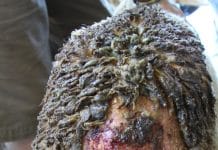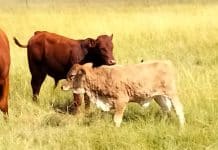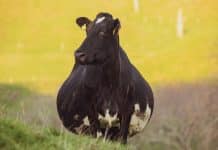Estimated reading time: 4 minutes
By this time, we should really admire ticks because they are so skillfully adapted to make a successful appearance year after year. Unfortunately, their presence can signify both good and bad news.
Let’s start with the good news. A tick’s job in nature is to get rid of weak animals that will harm the gene pool of a herd. Where there is no human interference, ticks will immediately identify weaker animals, especially between the ages of twelve and 18 months, as prey, climb onto them in large numbers and remove them from the gene pool.
These weaker animals usually have an inherent weak resistance against these parasites or are unable to develop a proper immune reaction. Under favourable conditions, a producer can use these signs to increase the resistance of his herd by taking note of cattle that pick up more parasite passengers than others in the same camp, and withhold them from the breeding programme.
Click here for more about heartwater management.
A dangerous alliance
To aid ticks in their task of eliminating weaker animals, they have quietly forged an alliance with some ‘nasty’ little friends. And this is where the bad news starts. These allies are pathogens which emerge as tick-borne diseases.
They cannot survive without the help of a tick and use a virtually unstoppable cycle of commuting from Arachnid to host and back, multiplying in numbers in both the parasite and the host.
In the case of blue ticks (single-host ticks) which carry pathogens causing redwater (babesiosis) in cattle, the female tick contracts the blood parasite from a carrier host when she overindulges on a blood meal.
Transfer of larvae
The blood pathogen, in this case Babesia spp., multiplies in the fed female Arachnid and is included in some of her eggs. Larvae that hatch from the eggs feed on the next host, transferring redwater to that new host.
The number of larvae transferred by such a ‘friend’ mainly depends on the level of infection of the host animal on which the mother parasite fed. It can range from 0 to 50% or more of the larvae. In the example of the blue ticks, it is called transovarial transfer of the pathogen.
Heartwater, which is the ally of bont ticks (three-host Arachnid), is transferred from one stage of the parasite to the host and from the host to the next stage of the tick, which then has to find the next host, transferring the heartwater pathogen to that host. The pathogen can therefore be transferred to several animals within one life cycle. This is known as transstadial pathogen transfer.
To dip or not to dip, read more about dipping cattle here.
Building immunity
Young host animals in this case are protected by the immunity transferred from the mother to the calf up until the age of around nine months in areas where the tick and the pathogen are found together, but afterwards they must be periodically exposed to the pathogen to retain their immunity. This is necessary in the presence of a tick bearer in the veld.
Read more about two-host ticks.
Severe outbreaks of diseases can occur in cattle that are transferred from an area without pathogens, to one where these ticks and their ‘nasty friends’ lie waiting. The opposite is also true when infected animals are moved to areas where redwater and heartwater do not occur.
This complicates decisions regarding tick control – should ticks and their friends be eliminated completely to nip tick-borne diseases in the bud, or should a certain number of ticks be allowed on cattle for them to maintain their immunity? The former is almost impossible, which means a producer’s fate is to cope with ticks to the best of his ability. – Ellie van Dalen, University of the Free State
For more information on tick resistance testing, contact Ellie van Dalen of the Pesticide Resistance Testing Facility at the Department of Zoology and Entomology of the University of the Free State on 083 388 5539 or vdalenem@ufs.ac.za.






